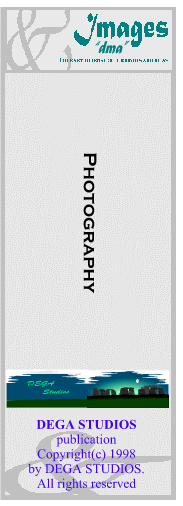|
|
|
|
I
took on this self-assignment as a way of forcing myself to take advantage
of the photographic opportunities and possibilities that I was overlooking
while pursuing my 'pure' nature work. It has allowed me to continue shooting
and refining my vision at times when I do not have access to all the
wonderful places that I travel to, often over great distances, for my nature
images. It has also allowed me to realize that I do not necessarily have to
travel anywhere except to "my own back yard" to find challenging
photographic subjects.
What ended up happening is that I took all the same skills I
use for landscape work, especially where I engage the landscape and extract,
or abstract, small, more powerful segments out of the broader picture, using
long lenses, and I applied them to completely different subject. Part of the
exercise was to find something I could get inspired or excited by without
traveling to some exotic, desolate wilderness or nature location, so I could
keep challenging myself visually and photographically in between major
nature outings. So I went in exactly the opposite direction, knee deep into the
hoopla, right into the heart of the big city, only 20 minutes by car, and
hunted for urban, industrial landscape abstracts. At first, I couldn't quite
figure out what I was looking for, but after a few failed attempts, one or
two of these reflections and distortions just caught my eye. Then, once I
SAW them, I started seeing them in overwhelming profusion. Picking out the small
sections with the most interesting shapes, patterns, colors, and details
then became the challenge (not to mention avoiding cars, busses, taxis, bikers,
pedestrians, thieves, the curious -likable and not so likable- and every
other typical big inner city distraction). Moving just a fraction of an inch could
change the image completely, so there were infinite variations to choose
from for each 'location,' a few of which put me in the middle of busy streets.
|
| Distortion #74: This is another somewhat monochromatic
image, however the geometrical components are much more prevalent. There is
a wealth of wonderful organic details in the distorted image contained
within and underlying beneath the inorganic, industrial reflecting surface
of the image's primary visual component.
|
The results ended up being 'nature' (organic) photos in a way anyhow- I
found 'organic' images in glass and metal subjects, things that reminded me
of patterns in leaves close up, ripples in ponds, undulations in the
bizarrely eroded desert landscapes.
Although, strictly speaking, these images are not of natural subjects, they
are most definitely outdoor photographs. Making these images required the
use of every photographic discipline that I routinely apply to my nature
work. Seeking these images out of the chaos, confusion, and profusion of
visual stimuli that can be found in the inner cityscape required the same
refined perception needed to find, for example, a small section of patterns
on a sand dune, or an intimate forest landscape. They are but extremely
small vignettes selected from of an infinite variety of possibilities in the
vast urban panorama of center city Philadelphia.
Distortion #44: Yet another warm toned monochromatic image,
but this one is a bit different from many of the others. It was one of the
very first successful images in the series, and was not a photograph taken
using larger, solid, and very geometric primary surfaces. The multiple, thin
panes of varying width, which formed the reflecting surfaces, have a very
prominent role in the image. They form a very interesting transition from
the distorted reflections on into themselves.
|
These images are in NO WAY digitally created, filtered, or derived. They are
100% straight photographic images of the subjects, exactly as they were seen
in the camera's viewfinder. The original transparencies were then scanned to
PhotoCD, and optimized for use on my web and in other digital publishing
media. The immense complexity and detail visible in the originals, and even
on inkjet prints, is not quite as apparent on the web images. There is so
much stuff going on in every one of these images, that they force a viewer
to engage them and to keep looking. One can find more and more details
hidden in all the chaos and in what makes up what is initially perceived,
upon first viewing, as totally abstract designs and patterns with no
substance of their own. Sort of like seeing them on a visual 'deeper' level
once the 'big picture' is absorbed.
One of the most interesting things, and perhaps also one of the most basic,
about these images, is that they show, in a most graphic way, that there are
always new ways to look at some of the common, generally unnoticed visual
objects which are present in our daily existence. People spend thousands of
hours over hundreds of days, year after year, and never SEE some of the most
interesting things that are right there in front of their eyes. Everyone who
sees this series of images exclaims something to the effect of "WOW! I will
never look at office buildings the same way again." Whenever I get a
reaction like that, it reaffirms to me that I have undoubtedly met the
challenge I set for myself and that I have succeeded with these images.
|
| Distortion #67: This is one of my favorite images from this
series. It is a distorted and very 'Dali-esque' image of one of
Philadelphia's most prominent structures- the clock tower of City Hall. It
provides a fascinating and refreshingly new view of a commonly seen item in
the Philadelphia skyline. Moving literally a fraction of an inch in any
direction produced a completely different image, and it took a while to
search for this particular one. I found it by moving out onto the street and
while dodging traffic.
|
|
|
|
|
|
|



